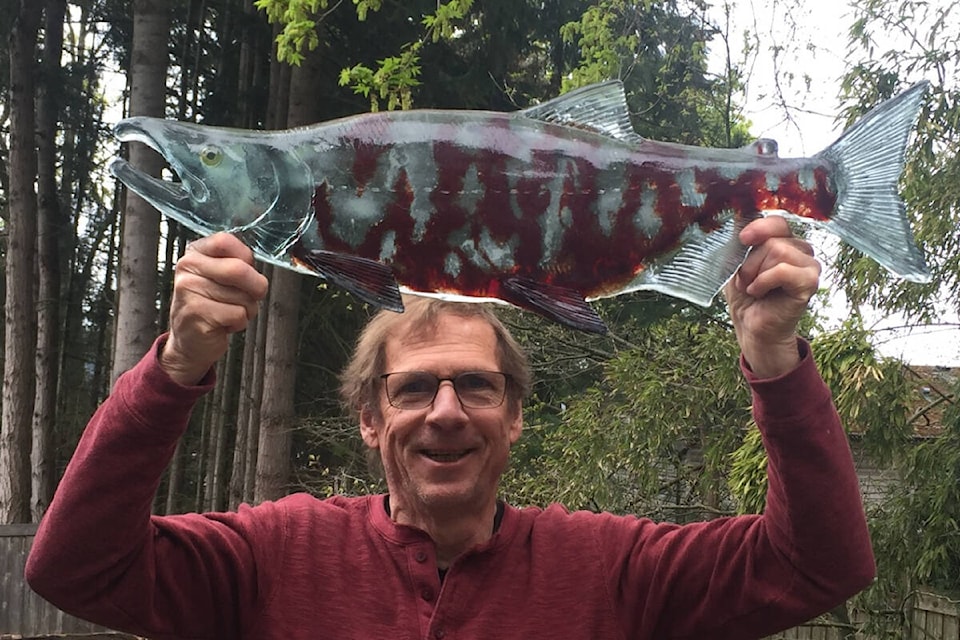Christopher Smith’s glass fish art creations have become a well-known sight in the Parksville Qualicum Beach area.
Most recently some of his fish appear in ‘The Tale of One Urban Creek’ exhibit in the McMillan Arts Centre (MAC), which showcases the story of one of the last local waterways that bears salmon and trout populations and what the community can do to help.
Smith thought up the idea for the exhibit earlier this year when he was in Shelly Creek Park near Hamilton to tag fish in the area with Mid Vancouver Island Habitat Enhancement Society (MVHIES).
“The fact that the creek is now dry, just above where this park is, for the summer,” Smith said. “There’ll be no fresh water flowing into it, other than the little spring that feeds it right there, until the first big rain event in the fall.”
He said there is a lot that could be done to improve conditions in the creek and help the salmon and trout survive. Smith said if the area upstream was rehabilitated into forested wetlands again, it would provide a ‘sponge’ that could soak up water and feed it into Shelly Creek, and ultimately the Englishman River, in dry times.
READ MORE: Shutterbugs invited to show their skills in Regional District of Nanaimo photo contest
Smith has been working with glass for decades. He learned his craft during an apprenticeship in a glass studio in 1975, in addition to a summer semester at the Alberta College of Art, before it became known as ACAD. He opened a studio in Nanaimo in 1977 and relocated to Lantzville in 1986. In 1991 he moved his studio to its present location behind his home on the edge of Nanoose Bay.
The glass fish concept came into being around 2010. Each one represents a significant amount of time, materials and effort.
Smith begins by carving a clay original, then layers plaster and silica on the clay before applying a second ‘jacket’ layer. When that sets, he pulls the clay out of the mold.
He then cuts out a glass silhouette that fits in the mold and adds the colours. Smith must carve a new clay original each time because they are destroyed in the process.
The first firing takes about a day.
Next, he puts in the fish’s eyes and adds the fins and skin.
He then puts the fish in the kiln and fires it for five days, if it is a sockeye salmon, and seven days if it is a spring salmon.
After firing, the fish is pressure-washed to get all the leftover plaster off and then put back in the kiln for another five to seven days.
Carving one of the clay pieces alone can take up to six hours, Smith said. Not including firing time, each one takes three days of effort.
“The salmon really resonate with me,” Smith said. “And they really resonate with the local culture in a huge way.”
Though he worked for years in commercial glass, when it came to his art, it was always about nature.
Smith recalled walking his dogs along the Englishman River and witnessing the Pink Run about a dozen years ago.
“There were pink salmon just literally coming out of the water below Top Bridge in the park,” he said. “The run was phenomenal. It just really got me interested in what was in the river and what was going on.”
Smith got involved with MVIHES and now sits on its board and participates in efforts such as tagging fish in Shelly Creek. He said it is important to remain optimistic.
“People say why bother, it’s all doom and gloom,” Smith said. “But if you take that approach and don’t do anything, then nothing gets done.”
